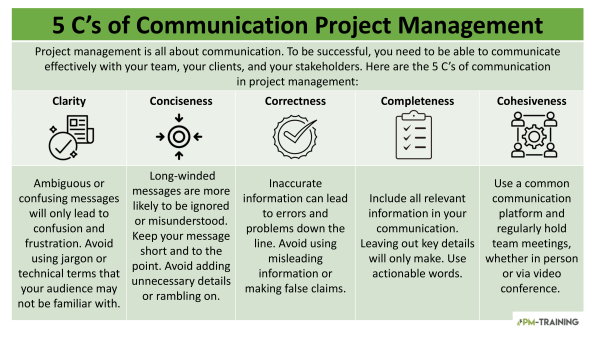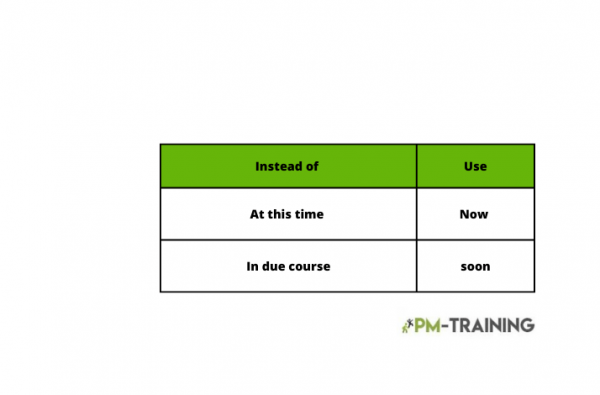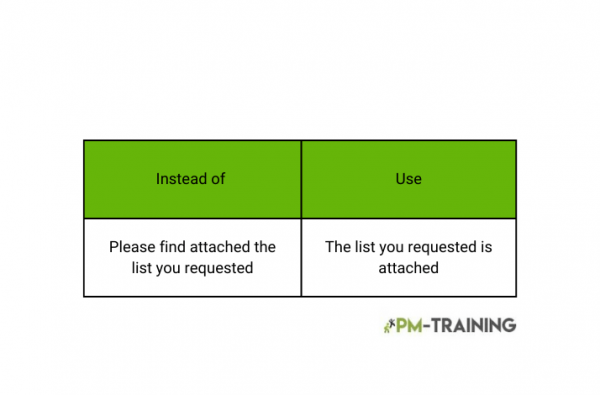Project management is all about communication. To be successful, you need to be able to communicate effectively with your team, your clients, and your stakeholders. This article covers the 5Cs of communication to help you communicate effectively through written words.
The clarity in communication is essential for project managers in order to ensure that all team members are on the same page and working towards the same goal. Concise communication avoids confusion and helps to keep everyone focused on the task at hand. Completeness ensures that all relevant information is shared so that everyone understands the instructions and can carry out their work correctly.
Correctness ensures that the information shared is accurate so that everyone can trust that they are working with the most up-to-date information. Cohesive communication establishes clear expectations and helps to prevent misunderstandings.
The 5cs Of Communication
Each of these is important in ensuring effective communication between project managers and team members. There are a few key things to keep in mind when it comes to communication in project management. Here are the 5 c’s of communication in project management:

Clarity
- Your communication must be clear and concise. Ambiguous or confusing messages will only lead to confusion and frustration.
- Make sure your message is clear and easy to understand. Avoid using jargon or technical terms that your audience may not be familiar with.
For example:
There are a few key things that you can do to ensure clarity in project management communication.
- First, make sure that your communication is meaningful. Be sure to use clear and concise language when communicating with team members.
- Second, use visual aids to help communicate your ideas. This could include PowerPoint presentations, flowcharts, or even just simple lists.
- Third, ask questions and encourage team members to ask questions. This will help to ensure that everyone understands the project and is on the same page.
Conciseness
- Be as brief as possible when communicating. Long-winded messages are more likely to be ignored or misunderstood.
- Keep your message short and to the point. Avoid adding unnecessary details or rambling on.
For example, when communicating the project schedule, it is important to be clear about the start and end dates of each task. Indicating the estimated duration of each task is also helpful. Finally, it is important to communicate any dependencies between tasks so that everyone is on the same page.
For example:
Instead of saying “I was wondering if you could maybe do me a small favor”, you would simply say “Can you do me a favor?”

Correctness
- Make sure that your information is accurate. Inaccurate information can lead to errors and problems down the line.
- Avoid using misleading information or making false claims.
For example
If a project status report is full of errors, it may be difficult for the project manager to understand the true status of the project. This can then lead to problems with the project plan, as the project manager may not be aware of all the risks and issues associated with the project.
Completeness
- include all relevant information in your communication. Leaving out key details will only make.
- Use actionable words.
For example:

Cohesiveness
- Cohesion is the thread that ties a project together. Without it, a project can easily unravel. There are many ways to foster cohesion in project communication.
For example:
One way is to use a common communication platform, such as Slack, for all team members to use.
This allows for easy sharing of information and easy access to project resources. Another way to promote cohesion is to regularly hold team meetings, whether in person or via video conference.
This gives everyone a chance to catch up on the latest project developments and to share their ideas.
By following the 5 c’s of communication, project managers can ensure that all team members are on the same page and that the project is moving forward smoothly.
Do’s and Don’t of effective communication in project management
When it comes to effective communication, there are certain Dos and Don’ts that you should always keep in mind. By following these simple tips, you can make sure that your communication is clear, concise, and meaningful.
Do:
- Make sure you are speaking clearly and at a moderate pace
- Use simple language that can be easily understood
- Avoid using acronyms or jargon
- Ask questions to make sure your message is clear
Don’t:
- Talk too fast or too slow
- Use slang or profanity
- Interrupt or talk over others
- Raise your voice
What are the 5 C’s of communication?
It is considered to be 5 key elements in project communication: Clarity, correctness, completeness, cohesiveness, and conciseness.
How can I avoid confusion and keep everyone focused?
The best way to avoid confusion and keep everyone focused is to communicate clearly, concisely, and consistently. Make sure that all relevant information is shared and that everyone understands the instructions. Be sure to communicate any changes or updates accurately.
Why is clear communication so important?
It is important to have clear and concise communication with your team to avoid confusion and ensure that everyone is focused on the task at hand. Complete and accurate information should be shared with your team to establish clear expectations and prevent misunderstandings.
